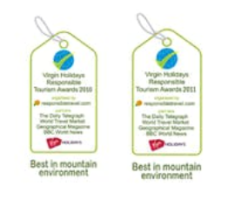Trekking in Nepal during December
Most people are discouraged from trekking in the Himalayas, the highest mountain chain in the world, during the winter. They think trekking in December is crazy, suspecting it to be super cold and snow blankets the whole nation blanketed by snow. They could not be more wrong. Nepal is of similar latitude as Cairo and Miami, closer to the Equator than the Arctic Circle. So if you go trekking in the middle hills with altitudes ranging between 1000 meters to 3500 meters, don’t be surprised if the temperatures are in the high teens or even low 20s degrees Celsius than the summer of most Northern European nations.
However, it always pays to invest in the right quality gear, such as a down jacket, a couple of fleece jackets, pants, base layers, warm hats, gloves, and sleeping bags, to name a few essential types of equipment. It is better to have more than less.
One of the best-kept secrets is that trekking in Nepal during the winter has many benefits. The days when it snows by the second half of November or early December are long gone. However, a few days in December, precipitation can result in rain in the low to middle altitudes and snowfall in higher elevations.
It is good to dress up in layers, which you can ‘peel’ one at a time when you start to warm/heat up as you begin trekking.
Benefits of Trekking in Nepal Himalaya during December.
- For the same reason mentioned above, most people think winters in Nepal are freezing, and some might even imagine most of the country is blanketed in snow. This couldn’t be further from the truth.
- The colder weather keeps the clouds down longer, and even if the clouds form and rise in the afternoons, they sink quicker due to the cold than in the warmer months.
- This makes the visibility of the mountains clear for most of the day.
- You will have the feeling of having the whole place to yourself.
- The views over the past two winters have been unobstructed like they used to be some 20-25 years ago.
- There will be many fewer trekkers on the trail and lodges if you go trekking to the famous trekking areas where there are lodges.
- You will be warm while hiking in the sunny weather – perhaps even sweating on uphill climbs.
- You could be the only trekkers in the lodge.
- For the same reason, the wifi works better in the hostels as fewer people log in.
- You can use the internet better for weather forecasts and temperatures.
- There will be fewer people queuing for hot showers.
- Despite winter, don’t be surprised by the greenery or flowers in the lower altitudes.
- The open lodges in the higher altitudes are left to the employees during winter, while the owners go for warmer places such as Kathmandu, Pokhara, or Chitwan.
- The employees keep the profit from food sales and only have to replace what they used. Therefore, this is a way for the employees to supplement their low salaries.
Can I do a high-altitude trek in Nepal in December?
A high-altitude trek in Nepal is possible during December. The better time to do a high-altitude tour during winter is in December and January. We do receive some precipitation for a few days every month. We have begun to receive more massive snowfalls during February and March than in the middle of winter.
Dangers/Inconveniences of trekking in Nepal during winter.
- Not all the lodges in the higher altitude will be open; no need to worry, as you will find a place to spend the night quite comfortably.
- Not all food on the menu will be available, but there will be enough to fill you up.
- The toilet floors might be frozen from water/urine spillage in the higher altitude treks. If possible, try to find toilets inside the main building; better still, ask if they have a room with an attached bathroom. Again, minimize spillage in the bathroom to avoid an icy floor.
- Toilets could be frozen/blocked due to the cold at higher altitudes.
- Water supply via pipe will be disconnected in higher elevations as frozen water expands and breaks the pipes.
- The paths through villages will be icy because the villagers have to let the public tap run all the time to prevent the pipe from breaking from freezing.
- The trail could be icy, and dirt can camouflage the ice.
- There could be very windy conditions in the higher elevations, be prepared to bring proper windcheaters and warm layers.
- Despite having mentioned this, there is less snowfall in December and January; you might still encounter rainfall in the lower elevation or snow – after all, mountain weather can change without much warning.
We have operated these treks in the winter months of December and January.
We did a trek to Annapurna base camp in December/January 2014-2015
2016 Manaslu circuit in December.
We operated a trek to Langtang – Gosainkunda in December/January 2016-2017
2017 Gokyo Lakes and Everest Base camp in December 2017.
2018, 2019 We did the Everest base camp trek with Singaporeans in December.
We did Family Annapurna Trek during December at the lower altitude.
When we did the Annapurna circuit trek with Tilicho Lake in January 2018, we met tourists and locals who misinformed some trekkers. Locals told them that the higher villages and the Thorung La 5416m pass were covered in deep snow. The people who said these will likely have done very little or no trekking experience.
December 2021 – There was some rain in the lower elevations and snowfall above 2300 meters at the end of this month. Some areas received as much as 50 mm of rain and snow between the 29th and the 30th of December.
December 2020 – The weather remained fair, and temperatures were much warmer than in the previous two years. In addition, we witnessed an average of 3-5 days of precipitation.
In December 2019, Nepal experienced light to moderate snowfall in the high elevations in the middle of the month for two days.
December 2018 – The first two days of the month were clear, with clouds forming in the afternoons. The following eight days were clear for short periods and clouded over in East Nepal. There was some snowfall in the Western part of Nepal. The weather improved from the second week of the month. Light snowfall occurred in areas above 3500 meters in the middle of the month on the 13th. It snowed lightly on the 17th and 18th, and 27th in the Eastern Himalayas of Nepal, Sikkim, and Bhutan.
Check out our Trekking packages for Nepal, Bhutan, India, and Tibet.
















